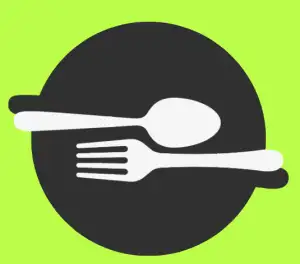Unlocking the Secrets to Alleviating Thumb Pain in Golf: Your Guide to a Pain-Free Swing

- Causes of thumb pain while playing golf
- Common symptoms of thumb pain in golfers
- The importance of proper grip and technique in preventing thumb pain
- Stretching and strengthening exercises for thumb pain relief in golfers
- Tips for managing thumb pain during golf sessions
- When to seek medical attention for persistent thumb pain in golf
- Prevention strategies to avoid thumb pain in golf
Golf is a popular sport enjoyed by millions around the world. However, it can also be a source of discomfort and pain, particularly in the thumbs. Thumb pain in golf is a common issue that many players face, and it can significantly impact their performance on the course. Understanding the causes, symptoms, and ways to alleviate this pain is crucial for golfers looking to maintain a pain-free swing and enjoy their time on the green. In this article, we will explore the secrets to alleviating thumb pain in golf and provide you with a comprehensive guide to achieving a pain-free swing. So let's dive in and unlock the secrets to overcoming thumb pain on the golf course!
Causes of thumb pain while playing golf
Causes of thumb pain while playing golf can vary, but some common factors include repetitive gripping and swinging motions, improper grip technique, and overuse injuries. The forceful impact between the club and the ball can also contribute to thumb pain. Additionally, underlying conditions such as arthritis or tendonitis can worsen symptoms. It is important to identify the specific cause of thumb pain in order to effectively treat and prevent further discomfort.
Common symptoms of thumb pain in golfers
Common symptoms of thumb pain in golfers include aching or throbbing pain in the thumb, especially during or after swinging the club. Swelling and tenderness around the base of the thumb may also be present. Difficulty gripping the club firmly and decreased range of motion in the thumb joint are other common symptoms. If you experience any of these symptoms, it is important to address them promptly to prevent further damage and ensure a pain-free golfing experience.
The importance of proper grip and technique in preventing thumb pain
Proper grip and technique play a crucial role in preventing thumb pain while playing golf. The way you hold the club can greatly impact the amount of stress placed on your thumb joint. It is important to ensure that your grip is not too tight, as this can strain the muscles and tendons in your thumb. Instead, aim for a relaxed grip that allows for flexibility and freedom of movement. Additionally, pay attention to your swing technique. A smooth and fluid swing will help distribute the force evenly throughout your hand, reducing the strain on your thumb. By practicing proper grip and technique, you can minimize the risk of developing thumb pain and enjoy a pain-free golfing experience.
Stretching and strengthening exercises for thumb pain relief in golfers
To alleviate thumb pain in golf, it is crucial to incorporate stretching and strengthening exercises into your routine. Start by gently stretching the thumb in all directions, holding each stretch for 15-30 seconds. Next, perform thumb squeezes using a stress ball or rubber band to strengthen the muscles. Additionally, try finger extensions by placing your hand flat on a table and lifting each finger individually. These exercises will help improve flexibility and build strength, reducing the risk of thumb pain while playing golf.
Tips for managing thumb pain during golf sessions
To manage thumb pain during golf sessions, there are several tips you can follow. First, take breaks and rest your thumb regularly to avoid overuse. Secondly, use a thumb brace or tape to provide support and stability to the joint. Additionally, try using a larger grip on your club to reduce strain on the thumb. Finally, consider using pain-relieving creams or taking over-the-counter pain medication before playing. Remember to listen to your body and stop if the pain becomes too severe.
When to seek medical attention for persistent thumb pain in golf
If you are experiencing persistent thumb pain while playing golf, it is important to know when to seek medical attention. If the pain does not improve with rest, ice, and over-the-counter pain medication, or if it worsens over time, it may be a sign of a more serious injury. Additionally, if you notice swelling, bruising, or difficulty moving your thumb, it is best to consult a healthcare professional. They can assess your condition and provide appropriate treatment options to alleviate your thumb pain and prevent further damage. Remember, early intervention is key in preventing long-term complications.
Prevention strategies to avoid thumb pain in golf
1. Use the correct grip: Ensure your grip is not too tight or too loose. A relaxed grip can help reduce stress on the thumb joint.
2. Warm-up before playing: Perform gentle stretching exercises for your hands and fingers to warm up the muscles and increase flexibility.
3. Choose the right equipment: Make sure your clubs are properly fitted to your hand size and swing style. Ill-fitting clubs can put unnecessary strain on your thumb.
4. Take breaks during play: Avoid overexertion by taking regular breaks during your game. This allows your thumb to rest and recover.
5. Use proper technique: Focus on using a smooth, fluid motion when swinging the club. Avoid any jerky or forceful movements that can strain the thumb joint.
6. Maintain overall hand health: Keep your hands strong and flexible by regularly performing hand exercises and stretches, even when you're not playing golf.
By following these prevention strategies, you can significantly reduce the risk of developing thumb pain while playing golf, allowing you to enjoy the game without discomfort or limitations.
In conclusion, managing thumb pain while playing golf is crucial for maintaining a pain-free swing and enjoying the game to its fullest. By understanding the causes of thumb pain and implementing proper grip and technique, golfers can prevent and alleviate discomfort. Regular stretching and strengthening exercises can also help in relieving thumb pain. Additionally, managing thumb pain during golf sessions through techniques like using a thumb brace or modifying equipment can be beneficial. If thumb pain persists or worsens, seeking medical attention is recommended. Lastly, adopting prevention strategies such as warming up before playing and using proper equipment can help avoid thumb pain in the long run. Remember, taking care of your thumbs will contribute to a more enjoyable and successful golfing experience.
Published: 01. 02. 2024
Category: Food



